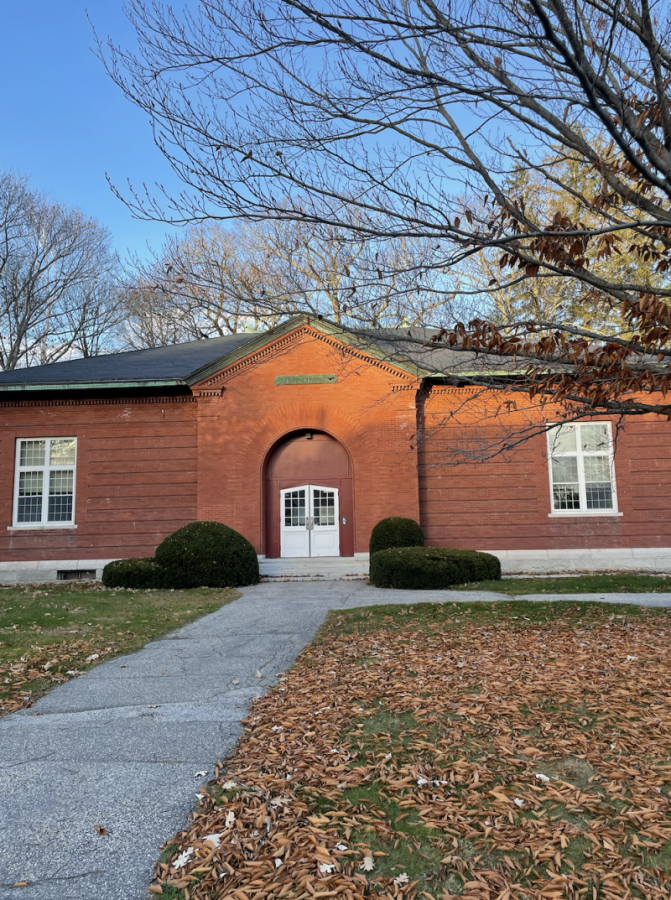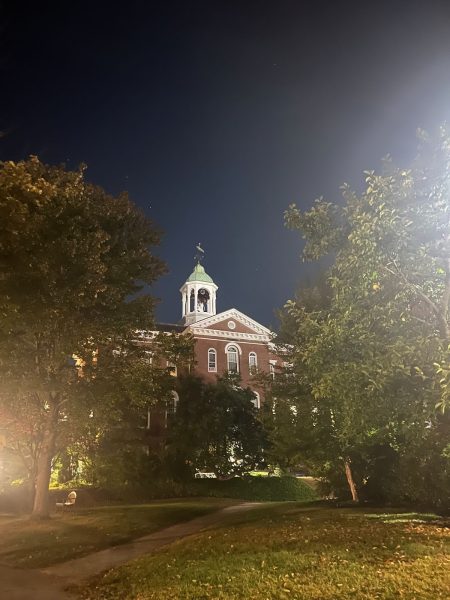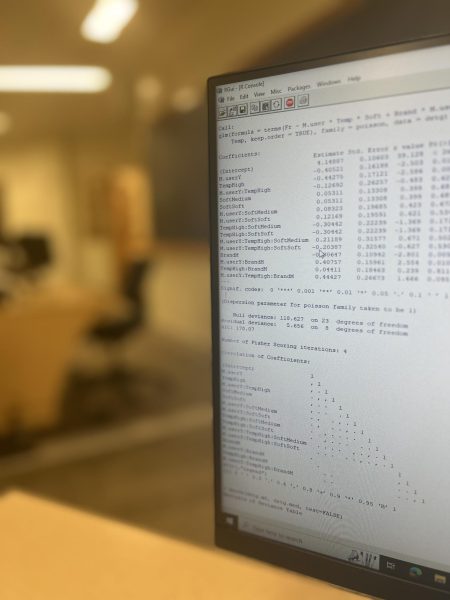Registration’s Optimization Algorithm Draws Mixed Reactions
The Registrar’s office
Registration for winter 2023 classes will be determined by an optimization algorithm as opposed to the previous first-come, first-serve, grade-based system popularized during the COVID-19 pandemic. This year’s post-pandemic algorithm will not take into account a student’s major, minor or class year.
Registration opens Saturday at 12:00 p.m. and closes at 4:00 p.m. on Nov. 11. Students may register for up to 4.5 credits during this time, and all students are treated equally by the algorithm regardless of when they input their course preferences during the registration window.
The optimization algorithm will then assign classes. Since the system’s goal is to “attempt to get as many students into as many courses as possible,” according to the Bates Registrar & Academic Systems Office’s website, this may mean placing students in other sections of the same course.
Professors may specify a desired class mix in the event that a course is overenrolled, and students are still allowed to petition to try and get into the class. Petitioning will be available on Garnet Gateway and begin on Nov. 16, continuing until Nov. 19. Faculty will review student petitions over Thanksgiving Break and notify students of the outcome of their petitions on Nov. 30.
Students will then be able to add or drop classes for the winter 2023 semester beginning at 7:00 a.m. on Dec. 5. Add/drop is first-come first-serve.
According to Acting Registrar Megan McHenry, registration for Fall 2021 and Winter 2022 followed a first-come first-served system staggered by grade level. Students registered in “two-hour blocks by class year, for up to 1.0 credits on the first day of registration, then reverting to full days by class year for the next four days,” McHenry explained in an email.
Coinciding with the broad easing of other COVID-19 restrictions, registration last year for Short Term and for this year’s fall semester used the new optimization system as well.
“The optimization and petitioning system offers some unique features,” McHenry wrote. “Because it’s not first-come, first-serve, there’s no time pressure for students to register. In most cases, students have an equal chance of getting into a particular course so, for instance, first-year students aren’t left with a very limited selection because all other classes went first.”
McHenry acknowledged that course registration can be a controversial process for students, with some becoming displeased if they cannot get into their first choice classes.
“Regardless of the method of course registration, each year we hear complaints about the process,” McHenry wrote. “However, we have not seen a significant shift in the amount of displeasure expressed by students.”
Some students, like Poppy Marsh ‘26, have expressed positive opinions about the switch back to optimization.
“Any course registration makes me anxious, but at least it’s not the worst [it could be]. I feel like first-come first-served is really, really stressful for me personally and for a lot of students who are, like, clambering over each other to get something,” said Marsh.
Mitchel Soederburg, a sophomore with experience in both forms of registration, agreed with Marsh.
“I hated the first-come, first-served. For the stuff you didn’t get, I feel like everyone was emailing professors, so it was more work for us [and] I feel like it was more work for the professors,” Soederburg said. “I think it’s good to do optimization.”
Previously, students had to get up early in the morning to register for classes alongside everyone in their grade, which often led to system crashes.
As McHenry alluded to, not all students are entirely in agreement about the benefits of the new system.
“I do like the aspect of the first-come first-served because you have to be responsible and ready to pick your classes, so sometimes it’s a little easier than optimization,” said Spencer Danziger ’23.
Maddy Ewell ’24 believes the optimization process, while creating a less stressful environment for course registration itself, often leaves students who are running on a tight degree schedule left without all the courses they need.
“No prioritization for majors and removing preference selection really hurts people who are on a tight course requirement,” Ewell said. “Especially as someone with little to no wiggle room, it is extremely frustrating that I cannot guarantee even one class placement that I need to graduate. I wish the system allowed us to priority register for one course so it’s not as stressful waiting on optimization to get us into that necessary section.”
Keira January ‘25 echoed Ewell’s statements.
“That just doesn’t really feel right, especially for people who need that class to graduate,” January said. “I feel like they could do optimization in stages … where seniors do it first and they get their classes, then juniors, then sophomores, and then freshmen. … Freshmen fairly get the last pick, because it’s not the end of the world if they don’t get a certain class.”
Substantial changes to the registration process are not likely in the short term. “This system is legislated by the governing body of the faculty … and we are bound to use it,” McHenry wrote.
For students who are nervous about course registration for the upcoming semester, McHenry offered some practical advice.
“My biggest piece of advice to students is to know that registration isn’t final when you’re adding things during that first week. Students often make their choices only to be surprised down the line when a course is no longer on their record,” she wrote. Simply “adding” a class on Garnet Gateway during the initial registration window does not guarantee a seat in that class.
“When we send out the notification that results are available after optimization, check your schedule to see what you got into so that you can decide if you want to petition for things you didn’t get,” McHenry added. “If you truly want to get into something you’re eligible to petition for, submit that petition! It takes just a minute or two and it’s worth a try.”
Her final piece of advice was to take advantage of available resources.
“The Student Advising Portal has a ton of information including a video that gives a registration overview,” MeHenry wrote. “I also advise subscribing to the calendar of important dates and deadlines (also at the Student Advising Portal) to stay on top of things, both during registration and generally.”
Your donation will support the student journalists of Bates College and help us cover our annual website hosting costs.

Maple Buescher served as the Editor in Chief for the 23-24 school year and the Managing Arts and Leisure editor for the 22-23 school year. She is a Politics...







